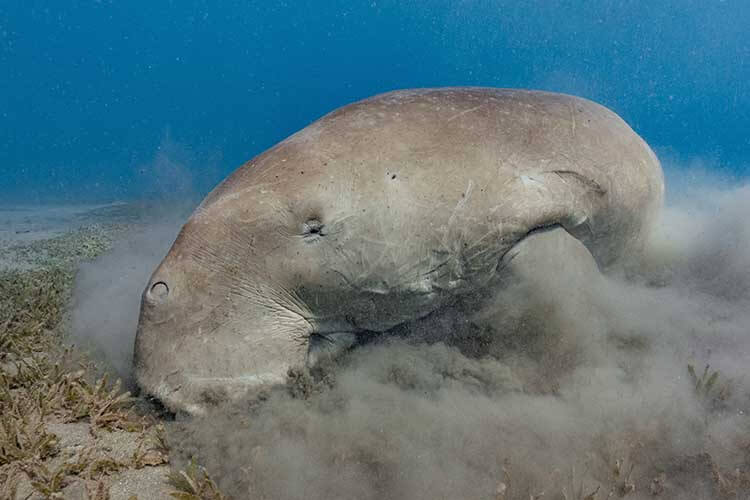
By DIVE Staff
The increasingly vulnerable East African dugong population has been reassessed on the International Union for Conservation of Nature (IUCN) Red List of Threatened Species as from ‘Vulnerable’ to ‘Critically Endangered’
The change in status, which will afford dugongs the highest level of global protection, is a result of a peer-reviewed scientific paper co-authored by Bazaruto Archipelago National Park (BANP) Research Coordinator, Evan Trotzuk, Research Assistant, Lorena Mato and African Parks Head of Science, Dr Angela Gaylard.
Once common in the region, only a few hundred dugongs (Dugong dugon) remain in Bazaruto Archipelago National Park in Mozambique, the last known viable population in East Africa. The Bazaruto population makes up approximately 90 per cent of the total number of East African dugong, and failure to protect them, according to the researchers, will make the elusive marine mammals’ extinction in East Africa ‘inevitable’.
Related articles
‘Strengthening community-led fisheries governance and expanding work opportunities beyond fishing is key in East Africa, where marine ecosystems are fundamental to peoples’ food security and livelihoods,’ said Trotzuk. ‘Further, the creation of additional conserved areas in areas where dugongs live, particularly around Bazaruto Archipelago National Park, would also empower local communities and other stakeholders to find, implement and benefit from solutions that halt long-term declines in dugong abundance, as well as in seagrass extent and quality.’
The assessments of the two East African dugong subpopulations assessments published on the IUCN Red List in December 2022, show that the dugongs’ range is rapidly contracting due to pressures at its outer reaches. There are now fewer than 250 mature individuals along the East African coastline and no more than 900 in New Caledonia, where they were historically abundant.
The use of gill nets, in which dugongs are frequently entangled, coupled with the destruction of seagrass meadows, which is a primary source of food for the animals, is putting further pressure on the species.
In East Africa, oil and gas exploration and production, bottom trawling, chemical pollution and unauthorised coastal development is causing rapid marine habitat degradation and loss. In New Caledonia, dugong habitat destruction is a result of agricultural run-off, pollution from nickel mining, coastal development and damage caused by boat anchors.
‘The East African dugong population is just one step away from extinction, as this new IUCN Red List assessment shows,’ said Craig Hilton-Taylor, Head of IUCN’s Red List Unit. ‘This new assessment provides the solid science needed to inform the conservation action that is so urgently needed.’
The study which led to the re-assessment, ‘Focused and inclusive actions could ensure the persistence of East Africa’s last known viable dugong subpopulation‘, by Evan Trotzuk et al, was published in May 2022 in Conservation Science and Practice, a journal of the Society for Conservation biology.



